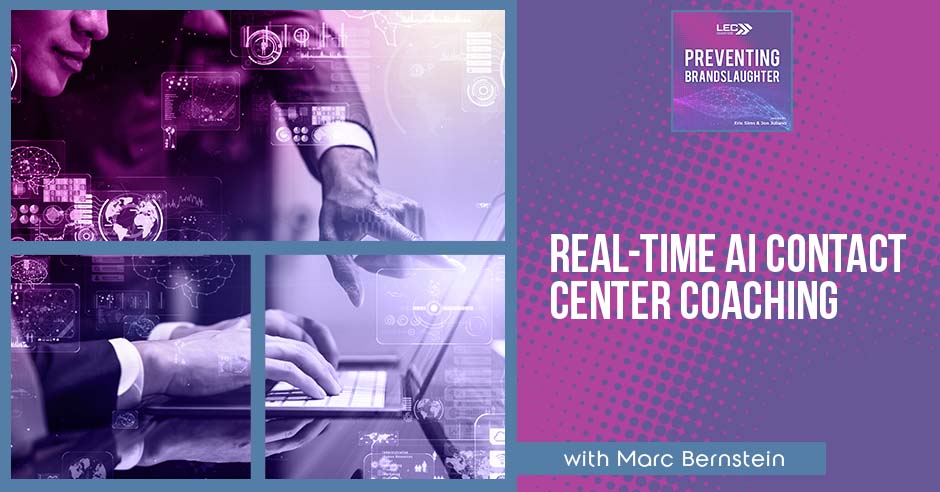
Your customer is the cog of your business that keeps the sales coming. So keeping your customers’ satisfaction should be put first. How will you keep your customers getting the service they need? Marc Bernstein, the CEO of Balto, takes on the real-time AI contact center to build better lives for your customers and your business in this modern age. The more frictionless experience you provide to your customer helps prevent the brand slaughter. This conversation provides insights into providing support to your agents to help improve customer support and grow your business. So don’t miss this episode with Marc Bernstein today!
You can follow Marc Bernstein on Twitter: @marcjbernstein
—
Watch the episode here
Listen to the podcast here
Real-Time AI Contact Center Coaching With Marc Bernstein
In this episode, we’re very fortunate. We have an awesome guest on the show. His name is Marc Bernstein. He is the CEO and Founder of Balto. He’s also the host of his own podcast, which is called Reimagining the Contact Center. It’s going to be an exciting show. Read further because there will be lots of gold here.
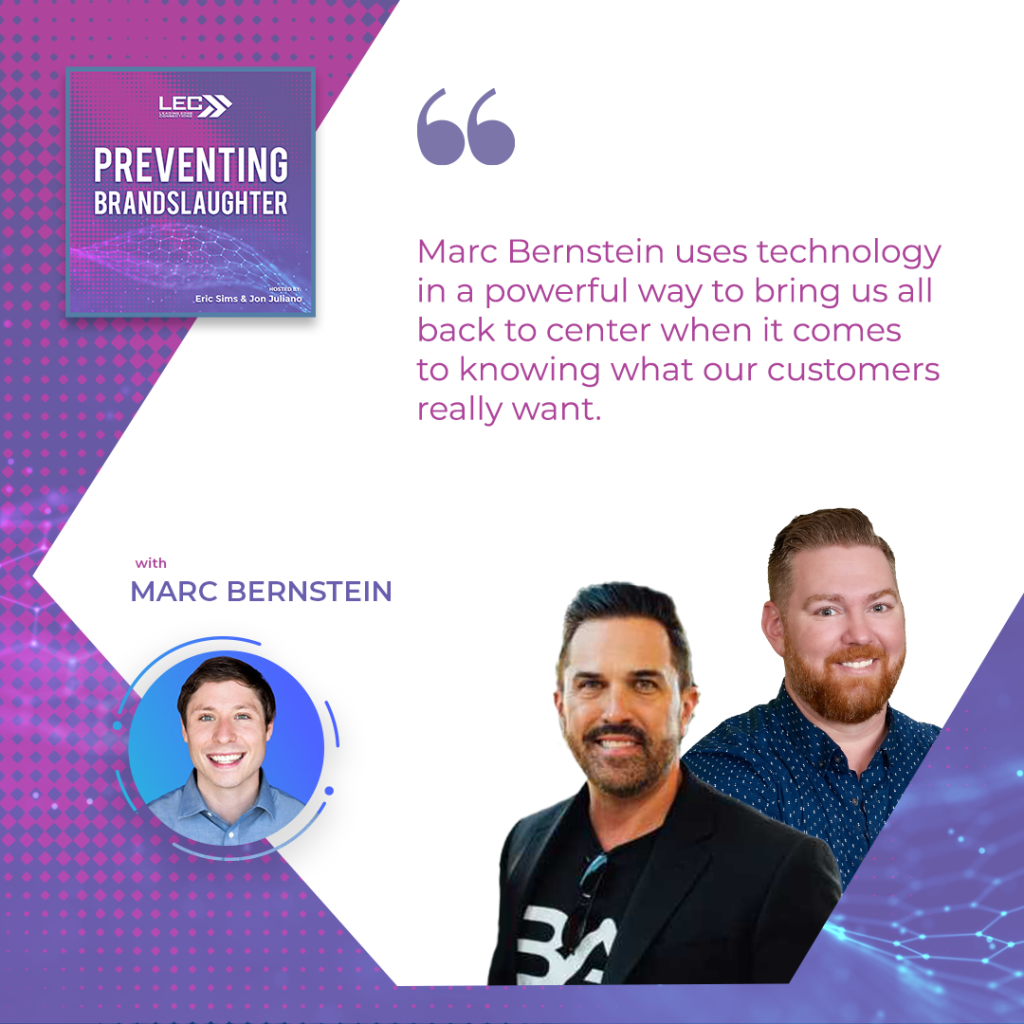
Marc, it’s great having you on the show.
Eric, thanks so much for having me. I’m excited to be here.
I’ve gotten to know you a little bit over the last few years. I was fortunate enough to be a guest on your show, Reimagining the Contact Center, which was awesome. It’s a great take you’ve got on looking at the business differently and challenging people to do that differently as well as it’s not just you. To back up for our readers, can you share a little bit about who you are, where you’re from, what’s Balto, and where did it come from?
I’m the Founder and CEO of a company called Balto. It analyzes sales and customer service conversations live while they’re happening. We’ll hear everything that a representative says as they say it and everything the customer says as the customer says it. In real-time on that representative’s computer screen, we’ll give them recommendations for how they can be as effective as possible.
A customer calls in and they got an issue with an order. They said, “My order never arrived.” Our software will hear that and automatically pop up resources, instructions, and responses right there for the representative, saving them time, making sure that they are treating that customer well and treating that customer as quickly as possible because most folks want to get in and get out, get off the phone, and get what they need.
I’m originally from the Washington, DC area and moved out to St. Louis for school. I started the company out in St. Louis. Shout out to St. Louis, a great city. I had talked to a mentor of mine right when I was graduating and said, “I want to start my career. I don’t know what field to go into, but ultimately, I think I want to start a company. Give me some advice on where I should start.”
He said, “Sales because if you’re starting a company, you’re either selling to get your first customers. No one’s going to do it for you. You’re either selling to get financing an investment because you need to fund the company somehow, or you’re selling talent to get people excited about your vision to want to join the team.”
I started out in sales, which is where I personally experienced the problem that Balto solves of getting out of your coaching session with your manager. You got some great feedback and some great advice. You get on the phone with the customer and forget everything that you had learned fifteen minutes earlier.
It’s the old Mike Tyson thing or whatever it was, “Everything’s great until you get punched in the face.” We’ve experienced that a lot, and I did too. When you get on the phone, you’ve gone through training as a salesperson, then somebody says something you weren’t prepared for or you get shock jacked and freeze at the moment. Balto is an exciting addition to the CX world. I say CX because our version of that is like CX is the new sales.
It is all lumped together now. The cool part about it is how it’s designed in a way to assist the agent, but there’s so much more to it than that when you look at how it protects the brand and the way that it impacts both sides of the coin. I know you folks have been doing this. Can you share an example or two or your philosophy on what it does from outwardly facing for the customer? How does it enhance the customer experience, which also enhances the brand recognition or brand experience?
I’ll start back with a piece of advice I got from a marketing leader several years ago. I was talking to this marketing leader and said, “We need to improve our brand. Let’s improve the logo, the colors, and what words we want to use.” He said, “That’s great. That’s all important stuff to do. Your brand is the compilation of experiences that people in the market have with your company. Who are the most important people in the market? It is your customers. Do you want to create a brand? Work on your logo, your color scheme, and your messaging in your language, but first off, work on making sure that your customers are your best ambassadors and are as happy as humanly possible.”
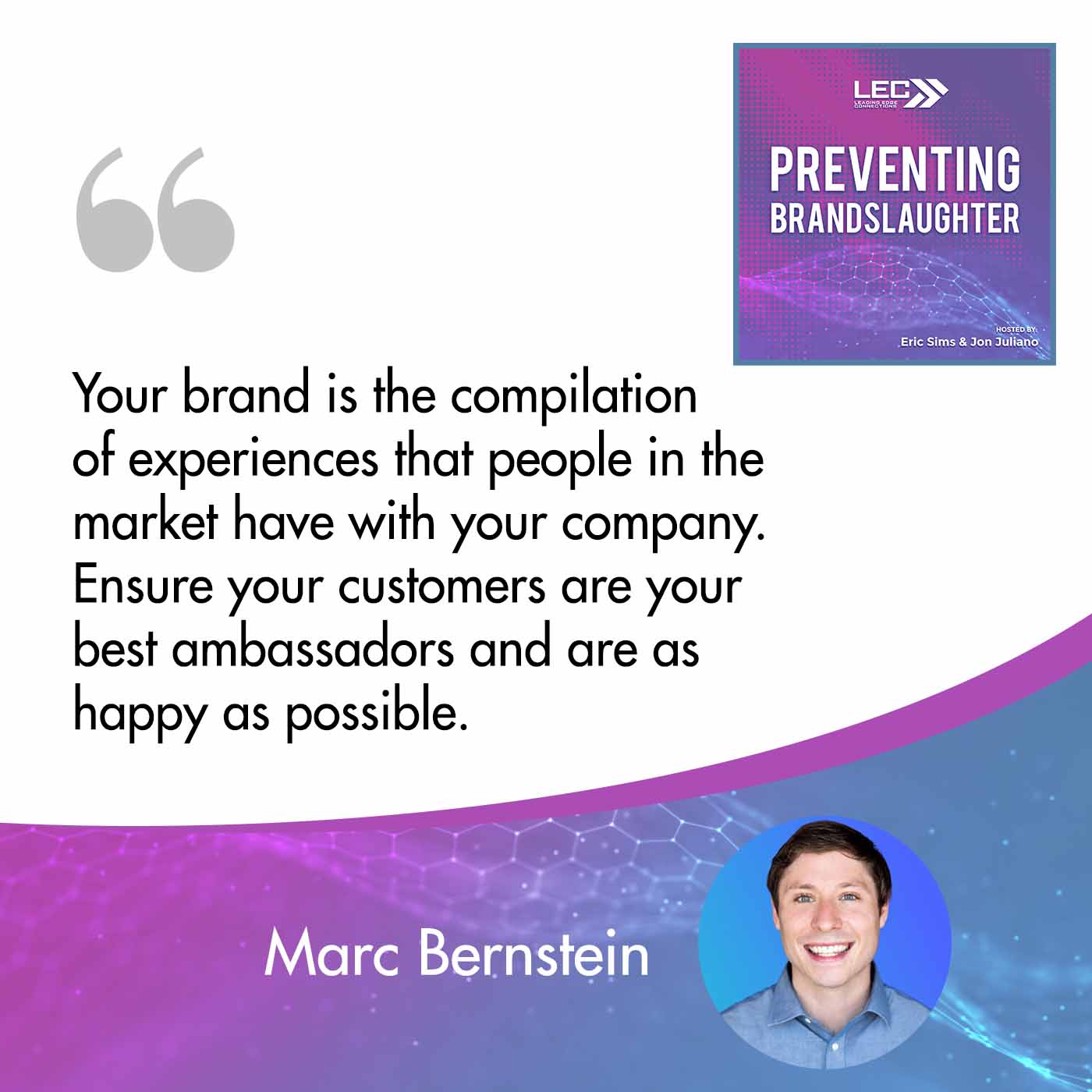
We try to apply that mentality to our customers because our customers are serving their customers. When you use a technology like Balto and you have a sales or customer service organization with thousands, tens of thousands, hundreds of thousands, or in some cases, millions of conversations with your customers, each one of those could be an opportunity to get the customer more bought in, more excited about your brand, and go, “That service was great. I would like to add on a new product.”
Each one of those can be an opportunity. It’s also a giant freaking liability. It’s not even a compliance or legal liability where the legal landscape, all these things you can say, can’t say, and can’t do. Also, it’s a liability of you piss off the wrong person. They’re blasting you on Twitter. They’re telling all their friends that they never want to work with you again. You think you lost one customer at the moment. You might have lost 3, 4, or 5 or who knows how many.
Making sure that all of those customer conversations or as many as possible are going the way your company wants and the way that their customers want. That’s the real power of our software. It’s to be able to understand those conversations and scale out the right stuff, so consistently you’re talking to your customers in the way you want to.
That’s powerful when you think about the challenge of businesses as they scale and grow. Going back to what you were talking about when you’re like, “I’m going to start a company. What do I need to do?” your mentor said, “You need to learn how to sell first.” When we’re all starting our own businesses, we’re doing a lot of it. It’s us and our hearts in it. Our message is our message.
As you bring people on, you have to filter that message down, but the larger you get, the more challenging that becomes to have those front-end people say the things that “you would say” and treat customers away as “you would treat them” as hundreds if not thousands of employees out there. Having something that allows them to speak your words through their voice is something that gets missed a lot.
When you think about something like Balto, he’s not going to say anything wrong or it’s going to correct him when he says something wrong from a compliance standpoint. That’s good, to your point. Lawsuit prevention’s very good, but more importantly, the voice of the business is being spoken consistently. We know from the studies that you’ve done and from the studies that most of the CX community has done, one of the top three things is message and brand consistency is crucial in this world.
Eric, you mentioned the voice of the business. Sometimes people forget that the vocal voice of the business happens when you’re talking to someone in customer service or talking to someone in sales. Think about like a retail location. You go into whatever your favorite store is because you want to go shopping for a new wardrobe. If that associate that you talk to engages you, tries to understand what you want, and gives you the time of day, that makes you feel good. That’s the business communicating to you saying, “This is what we are about.”
If they look like they’re too busy for you or they dismiss you or they say, “Go look over there,” and they point you to the corner, that’s also the business communicating what they’re about. How can businesses make sure that their voice is consistently the voice that they want to use rather than whatever happens to be used at that moment because people have on days and off days and can you help people make sure that they are delivering the voice the business wants?
Another thing that’s interesting about what you guys are doing is what I would call brandslaughter prevention. One of the challenges with companies is, “We’ve got employees all over the place. We’ve got dialers all over the place.” Even if that’s in one building and there are hundreds of people, you’ve got to be able to get information out to those people, have them be able to access that information and use that information. That’s always been a complaint and challenge out there. There’s a diminishing return on that. We get a few people in then it goes downhill. Balto creates a scenario where information is put in front of everybody simultaneously in a way that they’ve been trained to read and utilize that information.
Balto creates a scenario where information's input is in front of everybody simultaneously to create consistency and also enhance speed and accuracy. Share on XNot it only creates consistency and enhances the speed of accuracy of being able to say, “Whether we have a new offering and we want to make sure that everybody knows about it, or we want to change the way we’re saying something or something we’re getting customer feedback, we need to alter this.” All that gets faster. In this world where customer demand is growing increasingly at a skyrocketing rate, things move fast. That’s a huge advantage. Is that something that you specifically put in place when you were designing this around that? Can you chat a little bit about that?
Speed is more important now than ever. If you truly think about it at the highest level, being a little bit in the clouds with it, what are the things that businesses can focus on? It can focus on costs, quality, volume, and being able to deliver a lot of something. It can focus on speed. Over the last couple of years, speed has become a true advantage or a liability. If you are a customer and you’re looking around at your favorite brands, do they feel slow? We equate slow as customers to detach from reality, to backward, to not being in touch with what the customer’s market needs. We equate slow with not what we want. We equate fast with innovation. We create fast with being in touch.
Speed has become a true advantage or a liability. Share on XAlso, being reliable. If I’m on a call with a customer service person and they’re like, “Hold on, let me look this up. Let me check on that,” it’s a turn-off, depending on how long that is, but the ability to be able to answer a question almost immediately, if not immediately, builds trust.
It does. We’ve gone hard on speed and even to the point where all of our products are named real-time something. We have real-time guidance for agents, real-time coaching for supervisors, real-time quality assurance for the quality assurance team, and real-time note taker, which automatically creates summaries of calls, so agents can save time taking notes. We are constantly measuring how fast the software is able to pick up what’s happening in conversation and deliver the recommendation to the agent. Now, it is 200 milliseconds. It’s about how long it takes to hear what’s happening and reply with a recommendation. We are all in on speed, and that’s the direction that consumers want in this market.
It’s documented very well. It’s the instantaneous answers and instantaneous results. It’s the old adage in sales, “Time kills deals,” and it literally does now on the CX side and either on the sales side. If people get frustrated, they’re done. They’re checking out. There’s damage to your brand. Maybe they got off the phone or left somewhere and they got it solved ultimately, but how much friction was there?
Everyone’s looking for frictionless type experiences. The more seamless, speedy, and frictionless you can create those, that person turns around instead of going, “Eh.” In this world, it is the same as, “You’re crap.” They’re not promoting your brand and they’re impartial to it. You can get somebody that gets off the phone, “You can’t believe this. This guy I talked to had every answer I needed quicker than quick.”
Most people don’t measure call time, but it is being on the phone like, “I didn’t have to stay on the phone for 30 minutes. The guy got it done in 10, 15, 20, or whatever it was.” You’re speeding up and saving people time. Time is money on both sides of the coin. I know that’s probably some of the stuff you utilize when talking to your customers, which is why people are using Balto.
This show is called Preventing Brandslaughter. We’ve coined that word as the act of knowingly or unknowingly doing things within your business that kills your own brand. That’s brandslaughter. Being that, can you chat up a little bit about some of the things that you’ve seen and maybe you’ve heard back from your clients around things like, “This has helped us out. We’ve got our brand approval. Brand reputation’s been improved X percent.”
It tends to most often be the efficiency and the quality scores. Sometimes, folks will come back with NPS or Net Promoter Score and show improvements there, but because NPS is tied to so many different parts of the customer experience, usually, they try to get microscopic with it. Can I look and say, “My customer conversations are better? Can I clearly say that they’re better?” We score them and grade them if they’re better now than they were before. The second is, “Can I say that they’re faster?”
Commonly on the quality scores on a hundred-point scale, we see an 8-point or 10-point improvement in quality. That matters for a few reasons. Think about it. If you’ve got 100 points and you were previously at 90, then you get 100, that means that out of every 100 customers you talk to, you piss 10 of them off. Can you not piss off ten customers? What would it do if instead there were ten customers were happy?
That’s how you can view quality scores broadly. Secondly, a lot of our customers are BPOs, which are essentially Business Process Outsourcers, which are outsourced contact centers. They’re doing sales and customer service work on behalf of another brand. That quality score is their accountability. That quality score is almost their marketing message to their customers saying, “Look how good of a job we’re doing serving your customers. Look at how we’re constantly improving our quality.”
These brands, when they work with multiple BPOs, are ruthless. It is difficult, and they’ll say, “Your competitor is at a 74 and you’re at a 73. What are you going to do? We’re going to have to give them more business because they have higher quality.” We’re able to get our BPO customers to move up the ranks and win more business from their corporate clients.
That’s a pretty awesome value add other than the servicing thing. It’s a this-thing-pays-for-itself type of model because you’re improving these things. It not only pays for itself for the BPO. It pays for itself with its client. John and I had a conversation about this. When you look at CX and say, “CX is the foundation of our business,” people that are paying are what makes everything happen.
The job of CX is to make sure they’re happy, stay, and are serviced, and hopefully, find ways to grow that relationship, which means financial growth, or the opposite, it’s going to diminish. You’re going to have a big open back door. They’re going to go out the back. The enhancement there of the score going up does multiple things.
It keeps your foundation solid. The part that’s typically unseen that we were talking about is this. When that door is open, that means that your marketing spend and your sales team spend goes up because where they once had to convert at 18% to get that foundation for you, now you’ve got a leak. Now they’ve got to bump their conversion up to 20% or 25% to maintain, float, and tread water because they’re losing them as fast as they’re getting them.
There’s a diminishing return on your marketing spin. We all know we’ve done marketing before. Just because I throw more money out there does not mean I’m getting more customers. It’s a competitive market space. The key is to keep service and build the customer base you have. That’s another return on investment based on your model that is important for brand protection or preventing brandslaughter. It is that, “We’re not going to have people going out there conducting business in a way that opens that back door and has people running out, putting more pressure on your sales team, your marketing team, and your financial model.”
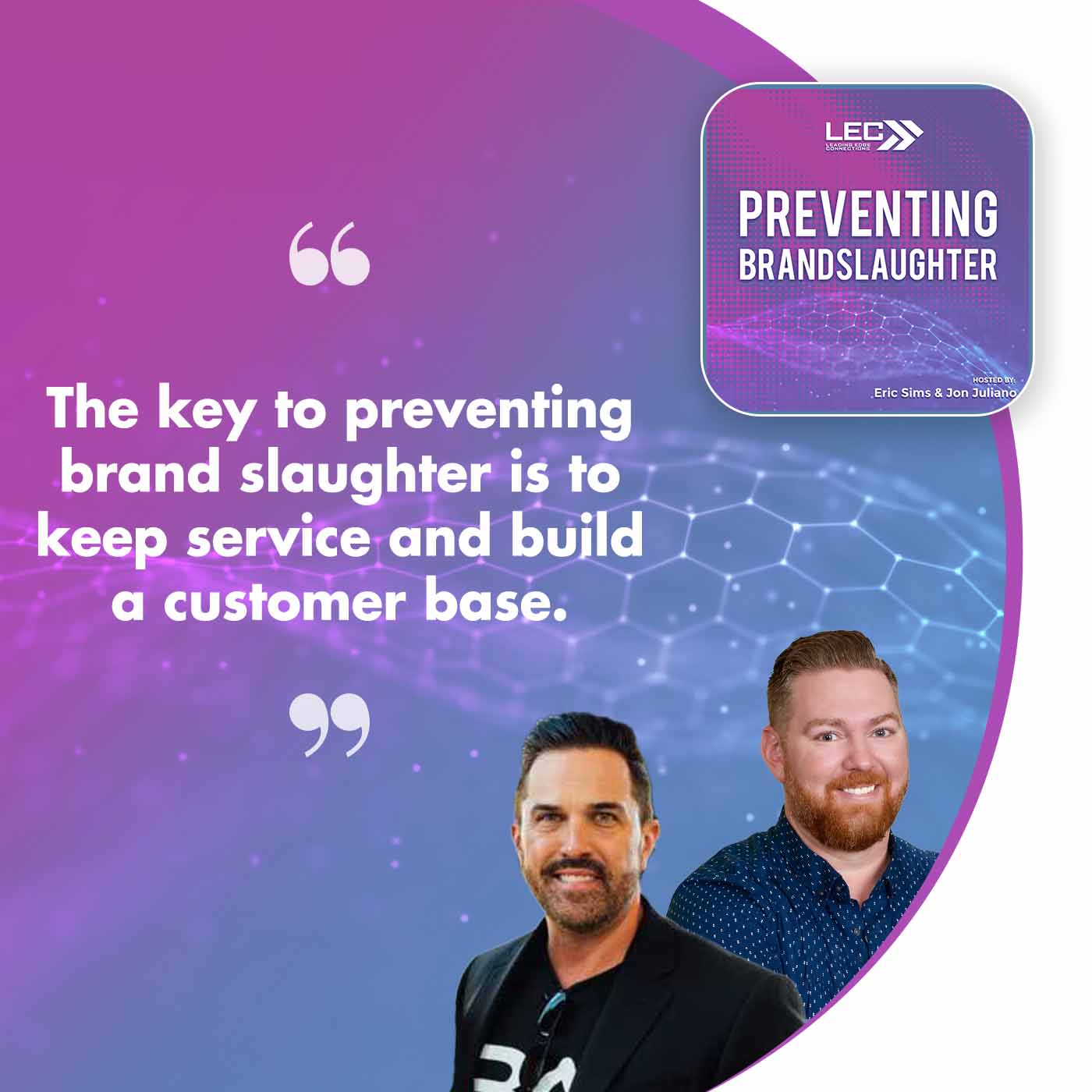
Eric, here’s one of the things that Balto deeply believes. One of our principles is part of our brand. The sales and customer service agent of 2023 of now is totally underappreciated and is one of the most valuable resources that you have in your business. If you think about it, think about how much money is passing through that person’s day-to-day experience. You can imagine that you work at a Telco. You sell cable internet or you’re a customer service agent for a cable or internet, whatever.
Maybe your average customer is paying you $60 a month and you’re able to handle something like 50 calls a day. Every single day, you’re handling 50 calls a day times $60 a month. You’re handling $3,000 a month, which is $36,000 a year. That’s like a car. That’s like a Mercedes every single day that that person is handling. That’s one agent. The amount of money that is flowing through sales and customer service interactions means that getting them right is a giant lever for your business. It shouldn’t be an afterthought.
Let’s key in on that for a second because people get focused on the fact that Balto helps the agent service the customer on the front end, but the return is we are asking that person to create an experience for someone else. The question is this. What experience are they living in? It’s very difficult for a human being to create an experience far superior to their own experience on a daily basis.
They may be able to do it. I can throw a birthday party one day a year and create something phenomenal. If I were asked to throw a phenomenal birthday party every day, 365 days a year, I’d probably find that challenging unless I lived in an environment that was like a circus. I’d be like, “Here it is.” How do Balto and its functioning for the actual agent create a stronger, more secure, or whatever environment for them that protects the brand as well?
I’ll start with your birthday party example. It’s even harder than that because they’re not throwing one every single day of the year. They’re throwing 50 birthday parties a day that is eight minutes long, where someone comes in angry. Not always angry, but they may come in angry, skeptical, or have a concern or a question.
You have to turn that into a birthday party in eight minutes, wrap up your work, then throw the next one. The challenge couldn’t be greater. We tackle that head-on. In fact, Balto’s tagline as a company is, “Agent performance unleashed.” We think it’s incredibly important to recognize the autonomy of these individuals. Historically, you get a big customer service floor, a big sales floor, you get a contact center, and the culture has been very much command and control.
It’s been, “You must do exactly this and this. We’re going to tell you when you take your bathroom break. You’re reading off a script, verbatim. No room to inject your own personality.” We all know intuitively that it is not the environment that people like to be in. Having a sense of control, autonomy, and being able to make a choice and apply your own brain and your thinking to say, “How do I want to help this customer?” is a fundamental human need.
Even more so, the Millennial generation is continuing to occupy more of the workspace. They will not tolerate the other version. They’ll leave. They’ll go do something else, or even worse, they’ll go do nothing at all. They won’t subject themselves to that type of environment for very long. We had a retention specialist on the show specifically around Millennial stuff. You’re keying in on another way of brand and protection with that because you’ve got to understand your audience being your employees.
It’s totally true. If you think about it, COVID was difficult for everybody, but one of the things that we all got was this appreciation that life is short and you need to think about what you can do to holistically enjoy your life. We were able to see the converse of that. What happens when you can’t see your friends or your family? You can’t go to your church or your religious group. You are doing all your holidays over Zoom. You can’t leave your house. All your favorite establishments, sports, music, and everything is shut down.
It forced all of us to take stock and say, “How do we want to lead our lives?” For us who were in some of the older generations, we’ve already developed our routines and have our perspective a little bit baked. It shakes it a little bit, but for Millennials, that was their formative time in this world. Millennials and Gen Z very much took a stand and said, “We are going to focus on the things that bring us joy and fulfillment.” Command and control don’t jive with joy and fulfillment.
That’s what we keyed in with on that conversation, and you guys seem to have a good grip on it, but more importantly, have a good solution. It goes back to your show, Reimagining the Contact Center. When John and I started, our take too was like, “People are tired of this model.” They don’t want to come to these buildings anymore. They don’t want people breathing down their neck all the time. They don’t like working under the condition and the assumption of, “You’re not smart enough and you’re not good enough to do this. Therefore, we have to micromanage you all the time.”
People will step up to scenarios when you empower them to do what they need to do. To your point, in creating that scenario, you’re going to attract an entirely different type of person because the person who would never do that job before would now consider doing that job because you’ve created an ecosystem for them that allows them to be more authentic and enjoy what they’re doing far more.
That is becoming the only type of person. What I mean by that is look at this labor market. Look at the record-low unemployment. Unemployment is low since 1962 or 1963. I saw this article on LinkedIn now that said, “The number of open jobs is fewer than ten million open jobs now.” The job side of it is shrinking, too, yet people are struggling to staff.
I was driving down one of our major highways and saw a storefront. It said, “Temporarily close due to staffing.” A piece of me said, “Is that a cop-out?” This thing is that’s their lived reality. They felt what they experienced. With what technology is doing and its ability to automate so many of the button pusher functions, it’s able to automate so much of the stuff that is “mindless” or routine. The work that’s left requires thought, creativity, and ingenuity. That work is becoming much more in demand. In order to have someone do that work well, you have to give them autonomy and the ability to make their own decisions.
One of the things that we always challenge people to do is we talked a lot about the customers and how customers want seamless and frictionless and those types of things. The company’s first customer is their employee, if you view it that way. What Balto does on the inside, to me, is it creates that seamless, frictionless, speedy experience for the agent.
In turn, it gets created for the end user customer as well. The first piece of that is you’re able to keep an employee. To your point, their heart is held to find. They’re even harder to keep. You’ve got an environment where you’re empowering people to be autonomous and successful, but the other complaint with Millennials is they want the tools and the information to be able to do the job.
They don’t like being thrown into the deep end of the pool and saying, “Figure it out.” That’s a huge complaint. They’re not willing to work their butt off as they said that they are willing to work their butt off. They’re willing to learn, train, grow, and have mentors, all those things. One of the challenges that historically businesses have done is that they throw people in deep in the pool, see who sinks, who rises to the top, and say, “That’s our team.” That’s not an environment that they enjoy. Balto does a great job of saying, “We’re going to put something in place that is preventative to that.” As they grow and their information grows, Balto is going to help service that employee.
Not only does the employee not enjoy that environment, but it’s also expensive. I was talking to one of Balto’s customers. They’re hiring their new training class. They’re bringing in a new class of customer service representatives. They said they got twenty interviews that they scheduled. They scheduled 20 interviews, but 13 showed up, so 7 people didn’t show up for the interview. Out of the thirteen people that showed up, they gave a job to 9 out of 13. They all signed their paperwork. They said, “We’re ready to go.” On day one, 2 out of the 9 people showed up. You can’t even run a churn-and-burn model. What are you going to do, hope that one of them sinks and one of them swims? Get another twenty people? The numbers don’t work out.
It’s killing a lot of people out there. I’m in the Contact Center BPO space. You know that. We were talking to a client. They’re training is ten weeks long. We got two training rooms. The most we can train at a time from 2:00 in the morning and 2:00 at night is 40 if it’s class of 20. They can’t even hire that many, to begin with.
They had the same math problem you’re talking about, which was, “We get people in. We’ve got five people that finally start, then two quit. Now, we’ve got ten weeks of three people and we’re trying to start other training, but you can’t get there.” Have any of your customers been able to shorten their training times? With the ability because you’re going to be able to get information repetitively in front of people and help them, has it enabled them to shorten training or anything like that?
It’s standard and is an expected outcome that happens. It’s intuitive. Imagine your first day on the phone as a sales or customer service person. You have two options. Option one is you’re on the phone and you’re staring blankly in the distance trying to remember all the stuff you had. Option two is that the second something important comes up in your conversation, it says, “Here’s how you handle this.”
Intuitively, we can picture that if you can look over to the right or left or wherever you have Balto on your screen, you go, “Thanks. That’s the resource I needed. I don’t have to ping my manager and ask them a question. I don’t have to put the customer on hold. I don’t have to fumble through it. I don’t have to guess at the response.” It helps tremendously. We’ll often hear, no joke, training times get cut by 25% to 50% because you’re able to have someone talking to your customers on day one with the support and resources as if they had already taken all these habits and ingrained them over a month or two months.
Every time you start talking, I start thinking of something else in a different way that has to be potentially helping. You mentioned something, and I’m thinking as my call center hat goes on. I’m like, “If the managers aren’t having to run down the aisle 900 times a day to answer the same simple questions, how much of a positive impact is that on their world? How much does it allow them to focus on the important aspects of the business? Also, does it create a scenario where a manager can manage more people, which financially and positively impacts the business?”
When you’re talking about an agent being able to get that information, one of the biggest challenges there is agent fatigue or agent avoidance of calls. Why do they do that? It’s exhausting when you don’t know what you’re supposed to say and you can’t find answers to stuff and people are beating the brakes off of you. Some people will purposely stay away from calls because, “I’m tired of getting my ass kicked.” Even if it’s not perfect, it changes the percentage of that experience. It takes it down, which enhances the agent experience and the manager experience.
It is a trickle-up, trickle-over, or trickle-down effect all over. On the surface, you think it is such a simple solution like, “This is a great piece of AI. Cool, it does this.” When you stop and think about how all of that impacts the brand and the voice of the business, it’s pretty remarkable. You don’t have your supervisor going to the bar or church or his buddy’s house at the end of the day vocalizing his frustration about how shitty business is and how he’s tired of answering these.
That’s brandslaughter, where your guys are going out and shitting all over your brand because they’re pissed off at the end of the day, even though they’re a supervisor. Most people don’t think of it. That’s brandslaughter. That’s a representative of your company out negatively talking about your brand in public. To me, that’s other peripheral protection measures that Balto brings to the table to prevent brandslaughter.
I’ll paint a diagram for you a little bit of how we picture it. Imagine that you have this diagram and the center is the agent. Surrounding the agent, you have their supervisor, their manager, and their quality assurance team who’s making sure that bad calls don’t slip through the cracks. You have the executive and the leadership and the customer.
Imagine you have little bubbles surrounding the agent. The way that the contact center has historically been is all of those bubbles are pointing pressure at the agent. The supervisors are saying, “Are you doing the right stuff?” The quality assurance team is dinging them on their scores. The executive team is putting new policies in place to try to restrict agents’ activities. The customers are yelling at them.
What we’ve perceived as Balto is can we align the supervisor, the quality assurance team, and the executive team to be directing help and a system of support toward the agent so they can support the customer? Instead of all these arrows pointing in, causing pressure with the agent, can we have support pointed toward the agent, which they can then point toward the customer? We’ve built it as this safety net to bring all these voices together to enable agents to be more effective rather than pressure them or enforce them to meet certain standards that aren’t always realistic.
We talked about the current state of Balto and what you guys are doing. Can you open the door and share with us a little bit about what the next possible versions, explorations, or steps for Balto are? Where do you guys see it going? What’s your goal? What’s the end game look like?
To take one step back and deliver a very clear and important message to the readers here, AI is coming. I don’t mean coming in a decade or coming into decades or you’re going to see it pop up here and there and be helpful. I mean that you’re going to turn around in a year and two years and go, “Crap.” Everything is different. If you have had the chance to explore ChatGPT or OpenAI, I recommend search ChatGPT and see what that tool is capable of. It is incredible. Balto is leaning very heavily toward the future and embedding generative AI capabilities into our applications everywhere it makes sense.
Generative AI is the ability to look through some data. That could be phone calls, transcripts, or even images. It looks through that data and creates new stuff from it that acts like whatever the previous stuff was. There’s this software called DALL-E. It’s trained on millions or maybe even billions of images across the internet. You could say, “Create a painting of Eric on the Marlins having a picnic on the field with his family.”
This AI can create an image that would look like what I described. Balto is saying, “Can we look through these customer conversations?” It is to be able to pick out things and have the AI create things that would be helpful for the agent. You could imagine what are the top 10 responses that my agents have given to a particular question. The AI can look through all the ways the agent has answered these questions. We call this Balto Beacon. It looks at all the ways agents have answered these questions and says, “Here are the top responses.” We’re going to create some sentences that your agents didn’t directly say but are similar to what your agent said that maybe you haven’t thought of.
This idea of being able to introduce new things to the business, be able to look through large data sets and say, “Here’s what you haven’t thought of. Here’s what you haven’t done. Here’s what you don’t know yet,” is going to be one of the biggest levers going forward. Balto wants to take that and inject that throughout the sales and customer service experience.
In essence, it’s what we’ve always wanted quality assurance to be able to do and say, “We need information back that’s valuable that we can say, ‘If you do this, this will enhance the call. Here are the top questions that are being asked, and we know that these are the questions that everybody wants to know and answer.’”
To me, that becomes multifaceted in value because now I can deliver that back to a marketing department or a front-end department. It says, “How do we answer these questions further in advance where you don’t even get calls because people already know this?” That’s amazing. I know that you’ve got a huge passion for it. Is there anything that you look at now or in the future and say, “Here’s something I would warn or strongly suggest people to pay attention to or stay away from when it comes to the market space,” and trying to help them prevent brandslaughter in their business?
One of the most important things, and every business gets caught up in this at times, is focusing too much on what your competitors are doing versus what your customers need. There is a constant Keeping up with the Joneses that any business will experience. You look at your competitors and say, “They do that, so we should do that. This is how they message it, so we should message it that way.”
That might not be what your customers want and that might distract you from the better, bigger innovation because who’s to say your competitors are right? How do you know they made the right decision? It is important to keep tabs on what competition is doing to filter that into your data set, but don’t get competition-obsessed.
Don’t try to follow every single one of their moves. Don’t try to play cat and mouse. They build something, you build something. Focus on your customers that may take your businesses in different directions but if, at the end of the day, you focus on your customers and deliver what your customers want, your business metrics will show it and you’ll be at a better place than your competitors who will then be trying to copy you.
Focus on your customers, and you deliver what your customers want. Your business metrics will show it, and you'll be better than your competitors, who will try to copy you. Share on XThat’s great advice. I don’t want to even try to put a bow on that because that ends the conversation very nicely. I always enjoy my conversations with you. It’s been great having you on the show. If people want to get in touch with you or get in touch with Balto, what’s the best way to reach out to you and get in touch with you?
I would love folks to connect with me on LinkedIn. It’s LinkedIn.com/in/baltoceo. Please connect with me. We would love to hear from you. You can find our website at Balto.ai.
I will say he’s very responsive. He’s not the ivory tower CEO that you can’t ever find or get in touch with. I met you that way. It was online, crazy chatting, and stuff like that. You are a very good man. It has been a pleasure having you on the show. We hope everybody reading enjoyed the show. Reach out to Marc and check out Balto.
Also, check out his podcast, Reimagining the Contact Center World, which is a great show. I think you do weekly episodes on that, so check him out. You can find that on any major platform out there. He’s got that distributed. We’ll leave it with that. We hope you’ve enjoyed the show. We look forward to seeing you next time.
Eric, it is a real pleasure. Thank you.
Important Links
- Balto
- Reimagining the Contact Center – Apple Podcasts
- OpenAI
- DALL-E
- LinkedIn.com/in/baltoceo
- https://www.LinkedIn.com/company/baltosoftware/
About Marc Bernstein
 He is the CEO of Balto, a A.I. company building the Intelligent Agent Desktop (IAD) for contact centers. He is also the host of Reimagining the Contact Center, a warm and conversational podcast that digs into the new contact center economy and how technology, businesses, and the modern customer work together to build better lives for ourselves and our families.
He is the CEO of Balto, a A.I. company building the Intelligent Agent Desktop (IAD) for contact centers. He is also the host of Reimagining the Contact Center, a warm and conversational podcast that digs into the new contact center economy and how technology, businesses, and the modern customer work together to build better lives for ourselves and our families.

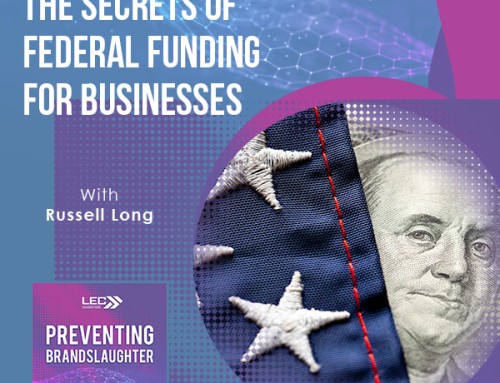
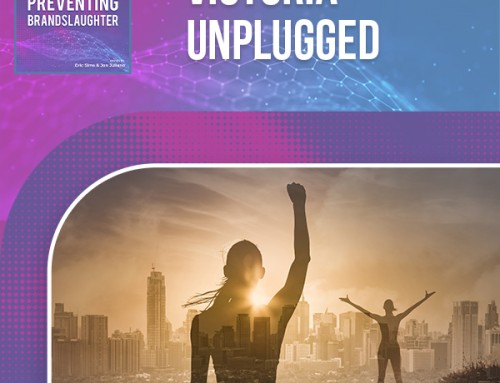
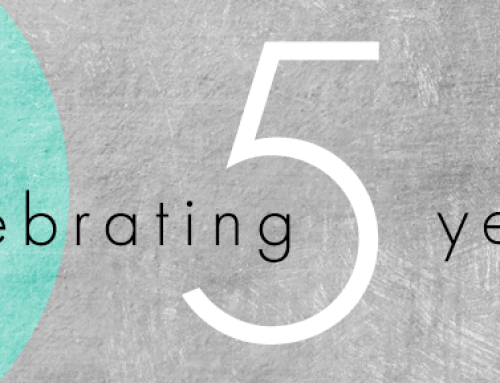
Leave A Comment